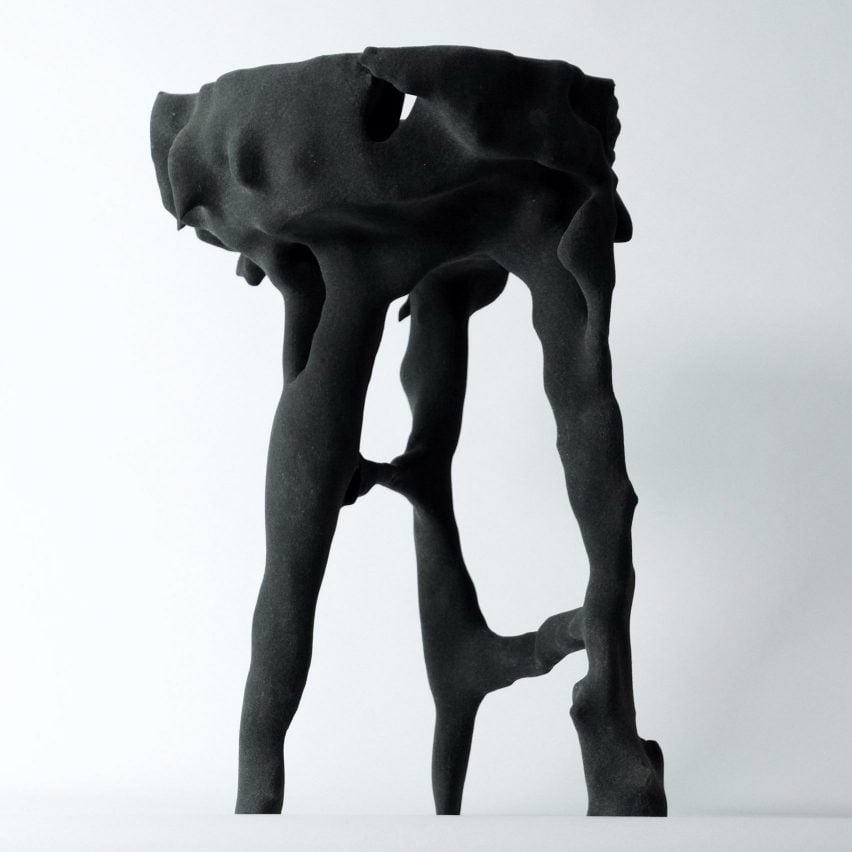Plastic-eating mealworms "collaborate" in stool design by William Eliot

Insects are an unlikely "collaborator" in British designer William Eliot's Digested Objects stool, which was shaped by plastic-eating mealworms as they gnawed their way through blocks of polystyrene.
The Digested Objects stool is recognisable as a three-legged seat but has a gnarled and pitted form with no evident logical basis to its contours.
The stool is 3D-printed in sand based on models created with the help of mealworms
The final piece is 3D-printed in black-coloured sand. But to decide its form, Eliot used waste polystyrene and around 150 mealworms, which are the larvae of the tenebrio molitor beetle.
These mealworms have the ability to digest polystyrene ? an otherwise unrecyclable type of plastic ? due to the presence of a particular bacteria in their gut. However, Eliot wanted to do more than use the mealworms as recycling machines. Instead, he wanted to explore the possibilities of biocollaborative design, a variety of interspecies design where the animals or insects are treated as partners in the creative process and allowed to exercise some form of agency.
Mealworms chewed through blocks of polystyrene to create the shape of the stool
To ensure the mealworms would produce something roughly in the shape of a stool, he injected the blocks of polystyrene with sugar trails that would draw the insects to eat away those portions of the material first. But then, he left them "free to burrow in any direction they feel".
"The humble mealworm has...
| -------------------------------- |
| Live talk with Twinmotion: how game engines are transforming architecture |
|
|
Villa M by Pierattelli Architetture Modernizes 1950s Florence Estate
31-10-2024 07:22 - (
Architecture )
Kent Avenue Penthouse Merges Industrial and Minimalist Styles
31-10-2024 07:22 - (
Architecture )






